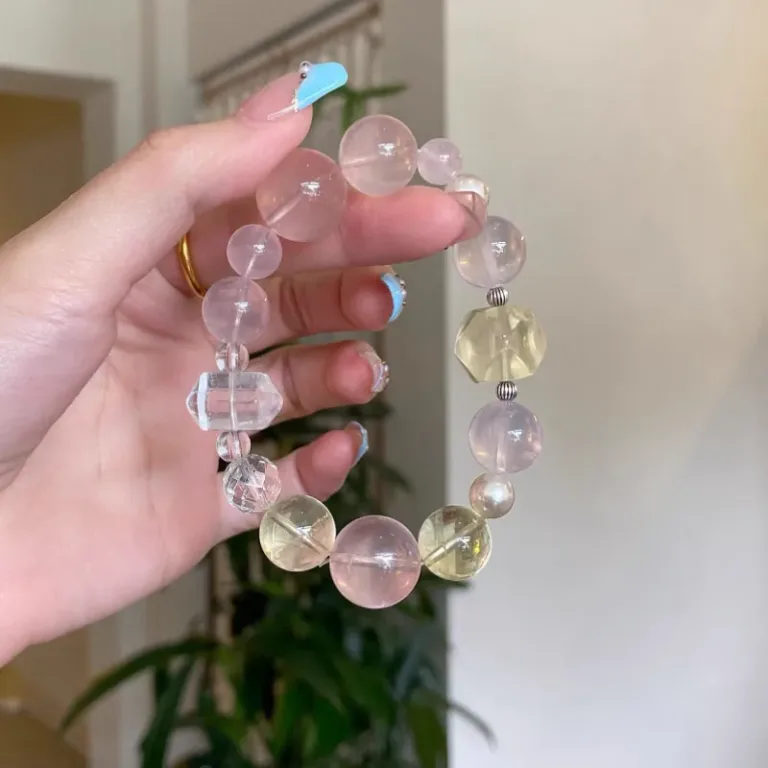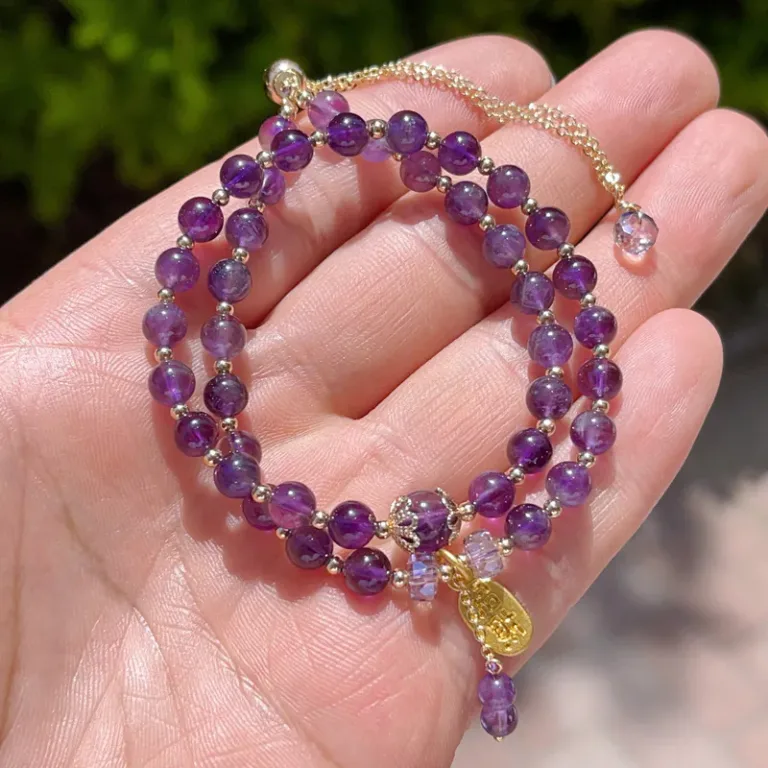In this era of material abundance and spiritual anxiety, people’s desire for wealth is no longer concealed. Fortune bracelets, this kind of jewelry that embodies the desire for money, is quietly becoming a new favorite on the wrists of urban people. It is no longer just a decoration, but a psychological totem, a spiritual sustenance for seeking certainty in an uncertain era. When we cast our eyes on those crystal clear crystals, carefully carved Pixiu, and golden ingot pendants, we see not only the beauty of craftsmanship, but also the subtle projection of the collective psychology of an era.
The material selection of fortune bracelets is itself a carefully designed semiotic game. Citrine is given the name of “Stone of Wealth” because its color is similar to gold; green ghost crystal is sought after because its internal inclusions resemble the dollar sign; tiger eye stone is believed to enhance decisiveness and be “powerful” in the business world because of its texture. These natural minerals are recoded by human desires, their physical properties are relegated to the second place, and their symbolic meanings are infinitely magnified. Interestingly, this kind of symbolic construction often lacks scientific basis, but it can be constantly self-reinforced in commercial propaganda and word of mouth, and eventually become a kind of “recognized” truth.
Behind the popularity of fortune bracelets, it reflects the wealth anxiety that is prevalent in contemporary society. In an environment of high housing prices and fierce competition, people are eager to seize any opportunity that may change their destiny, even if such an opportunity is covered with the cloak of mysticism. The act of buying a fortune bracelet is essentially a low-cost psychological hedge – “Since scientific methods have been tried, why not try metaphysics? What if it works?” This mode of thinking is particularly prevalent among young people with higher education, forming a cognitive dissonance phenomenon where rationality and superstition coexist. Fortune bracelets have thus become a psychological placebo to relieve anxiety. Its actual efficacy may be questionable, but the psychological comfort it brings is real.
The prosperity of the fortune bracelet market is a perfect marriage of consumerism and mysticism. Merchants are well aware of the psychological weaknesses of modern people, and bind their products with vague concepts such as “energy field”, “wealth”, and “noble people”, giving ordinary accessories supernatural value. The prices range from tens of yuan to tens of thousands of yuan, meeting the needs of consumers at different levels. More savvy merchants will also launch “opening” services, with “masters” blessing the bracelet to double the “spiritual power” of the bracelet. The cleverness of this business strategy is that it creates an unfalsifiable value proposition – if your fortune does improve after wearing it, it is naturally the bracelet’s credit; if it doesn’t work, it may be that your heart is not sincere enough or the timing is not right. In this logical closed loop, consumers can never get clear negative feedback, and the market can continue to prosper.
From a psychological point of view, fortune-bringing bracelets may indeed produce certain effects through the mechanism of “self-fulfilling prophecy”. When a person firmly believes that he is wearing a jewelry that brings good luck, his self-confidence will increase, his behavior will be more decisive and generous, and this positive state may indeed attract more opportunities. However, this effect has nothing to do with the material or shape of the bracelet itself, but comes from the power of psychological suggestion. The same bracelet, if told that it is “fortune-bringing”, may make people excited; if told that it is an ordinary decoration, it will not have this effect. This reveals the true mechanism of the fortune bracelet: it is a mirror that reflects the wearer’s own psychological state and expectations, rather than possessing any supernatural power.
The popularity of fortune bracelets also reflects the fragmented characteristics of contemporary social beliefs. Today, when the influence of traditional religions is declining, people no longer accept systematic doctrines, but extract fragments from various cultural traditions and piece them together into a personalized belief system. The “opening” of Buddhism, the “talisman” of Taoism, and the concept of “energy field” in Western mysticism can all coexist harmoniously on a fortune bracelet. This “supermarketization” phenomenon of faith reflects the diversity and confusion of postmodern social values. The fortune bracelet has thus become the material embodiment of this fragmented belief. It does not need the support of a logically self-consistent system, but only needs to meet immediate psychological needs.
There is no right or wrong in the act of buying a fortune bracelet. The key lies in how we understand our relationship with it. If it is regarded as a psychological aid, an object that reminds ourselves to maintain a positive attitude, then it does have its value. But if you put all your hopes on a piece of jewelry and expect unearned wealth to fall from the sky, you will inevitably fall into the trap of self-deception. After all, true wealth comes from a clear mind, hard work and wise decision-making, not a piece of jewelry on your wrist. Fortune bracelets can be a small footnote to our pursuit of a better life, but they should never be the entire content of our life script.
In this world full of uncertainty, fortune bracelets are like miniature beacons of hope, lighting the way forward for people. When we see through the psychological mechanisms and social causes behind it, we may be able to treat this cultural phenomenon more rationally – neither over-reliance nor total denial, but on the basis of understanding, find our own balance point. After all, human beings’ pursuit of certainty and control will never disappear, what changes is the way we choose to express this pursuit. And today, this way happens to be a delicate bracelet, quietly wrapped around the wrist of those who desire wealth, flashing a subtle light.



